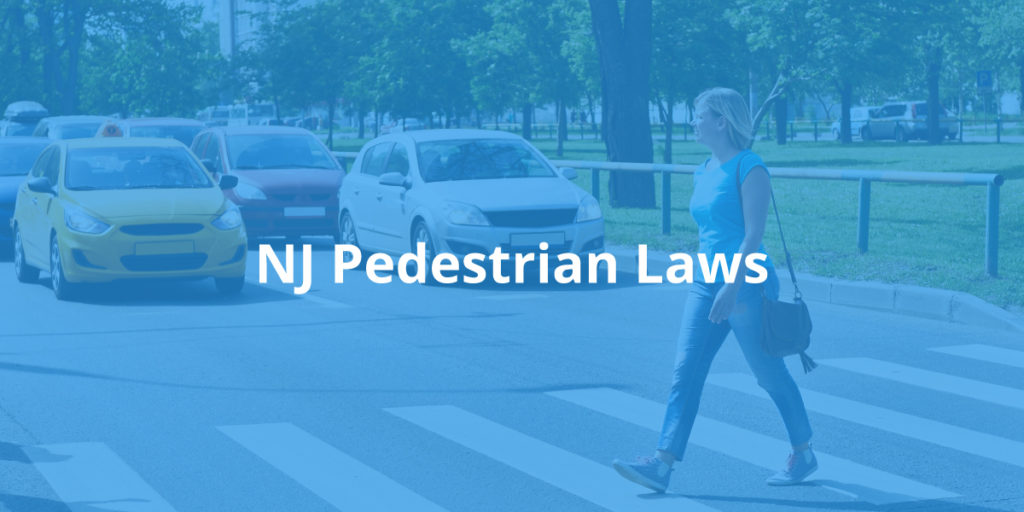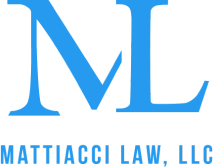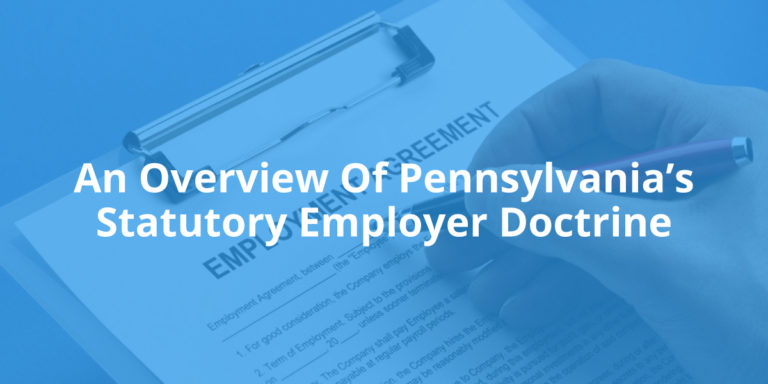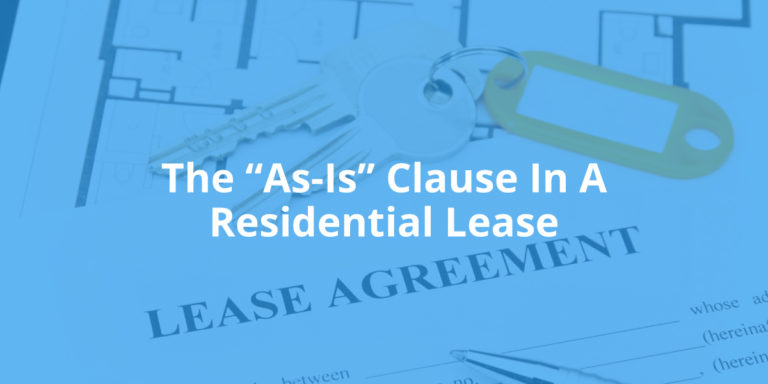
Everything you need to know about the laws and your legal rights as a pedestrian, and driver, on the streets of New Jersey.
The National Highway Traffic Safety Administration (NHTSA) consistently publishes pedestrian safety statistics. The NHTSA calculated that a pedestrian collision happens once every seven minutes. The number of pedestrian deaths per year equates to one every two hours. It’s very clear that pedestrians all across the country are taking a risk when walking alongside a roadway.
New Jersey is known for having one of the highest rates of pedestrian accidents across the country. This is one reason why the state’s legislators have made pedestrian safety a major priority in recent years. On April 1, 2010 a new crosswalk law was put into effect across the state. The major change in this law was that motorists were now required to stop for pedestrians at any given marked crosswalk. The major difference to this law is that drivers only needed to yield prior to the 2010 change.
Any type of failure to fully observe this basic roadway law ends up being very costly, and leaves drivers subject to any or all of the following:
- 2 points on driver’s license
- $200 fine (not including court costs)
- 15 days of community service
- Surcharges with insurance
So, if you or a loved one has been hit by a motorist while walking and the driver was at fault for the collision, then you may be eligible to receive compensation for your recovery. Our team of personal injury lawyers at Mattiacci Law, LLC are here to help you when it comes to filing your claim and pursuing your fair and full compensation for the damages you or your loved one has suffered.
In this page we’ll discuss everything you need to know about New Jersey’s pedestrian laws. Readers can always reach out to us for a free consultation so we can review the facts of your case and begin the initial steps towards legal recourse.
Legal Experience is a Necessity After a Pedestrian Collision
There are instances in which a driver and their insurance company clearly see that a pedestrian’s injury claim is valid, which may leave pedestrians wondering if they really need the assistance of a personal injury lawyer after these types of incidents. However, insurance companies will often lowball an unrepresented victim and try to settle a case for far less than it is worth.
It is likely that an injured pedestrian may never have been struck by car before and is not familiar with the legal process. For us, we are extremely experienced when it comes to these types of injury cases. We fully understand all the economic and non-economic damages that are associated with pedestrian injuries. We are also well acquainted with the insurance companies that are likely going to try to diminish the value of your claim with their initial settlement offer.
When it comes down to it, you should receive enough compensation for damages including the following:
- Medical bills (past and future)
- Rehabilitation fees
- Specialist bills
- Lost wages
- Loss of quality of life
- Mental anguish
- Pain and suffering
- Scarring and disfigurement
- Loss of consortium for the injured person’s legal spouse
Every pedestrian injury is different, but a person will put often maximize his or her recovery by consulting with an experienced pedestrian accident lawyer as soon as possible.
New Jersey’s Right-of-Way Pedestrian Laws
It’s crucial to have a solid understanding of New Jersey’s actual laws when it comes to building the foundation for a pedestrian accident claim, and that includes understanding New Jersey’s comparative negligencelaws. What this essentially means is that a judge or jury will decipher what percentage of fault each party bears in relation to an incident. Needless to say, if a pedestrian is in a marked crosswalk then he or she has the right of way and all or substantially all of the fault should be on the negligent driver.
The following are the fundamental right-of-way laws in New Jersey that you should be aware of:
- Drivers: Statute 39:4-36 covers crosswalks and general pedestrian safety, and this is the part of New Jersey’s laws that changed back in 2010. Today, drivers must always come to a complete stop, and remain stopped, while pedestrians are within designated crosswalk areas. Drivers must also yield to pedestrians who are in an unmarked crosswalk. Pedestrians should also try not to suddenly leave a curb or safe place and walk/run into the path of any vehicle that is too close for the driver to appropriately yield.
- Pedestrians: All pedestrians should obey all traffic signals for both pedestrians and motorists. Pedestrians are required to yield the right-of-way in the situation in which there isn’t a marked or unmarked crosswalk.
Drivers carry a major responsibility in terms of pedestrian safety simply because of the overall mass and power they’re operating. When a car strikes a pedestrian, the pedestrian is the one who loses. Pedestrians almost always have the right of way.
Common Causes of Pedestrian Accidents
Pedestrian accident victims have the burden of proof when it comes to proving the liability of the driver who caused the accident, which means you’ll need some type of evidence that shows the driver was at fault. This is one of the reasons why it’s so crucial to hire an experienced personal injury attorney who specializes in all types of car accidents, knows how to investigate crashes, and is well acquainted with accident reconstructionists and other expert witnesses that can support your claim.
We know how to obtain and utilize all the necessary evidence to win your case, which can include photos/videos of the accident scene, medical and police reports, witness statements, expert opinions, traffic camera footage, and other documents. We’ve found out throughout our years that the following causes many pedestrian collisions:
- Texting and driving (distracted driving)
- Speeding
- Poorly designed traffic signals and signs
- Driving while under the influence
- Flawed road designs
- Drivers not looking both ways when turning
- Drivers not following traffic laws
- Potholes
- Non-functioning traffic signs and signals
- Traffic signs hidden by trees and other foliage
- Improper street lighting
As you can imagine, some of these causes may not be solely the fault of a driver, but can also be the fault of a local government or municipality. It’s crucial that you hire a pedestrian accident attorney who fully understands what it takes to handle cases against local municipalities, because there are caps on compensation that plaintiffs can collect in certain situations.
What to do After a Pedestrian Accident
When you’re involved in any kind of car accident as a pedestrian, emergency medical teams and police will often come to assist you. If you need assistance immediately, contact 911.
If a driver attempts to flee the scene, try to get information on the make, model, and a description of the vehicle if you are able to do so safely. Getting a photo of the car and especially the license plate can be essential.
If the police arrive they can assist in obtaining the name, contact information, and insurance information for the at-fault driver. Other than basic information, it is best to call an attorney as soon as possible in order to protect your rights and to ensure you do not provide too much information to the opposing driver’s insurance carrier.
Avoid giving statements to an insurance carrier before speaking to an attorney. Most importantly, seek emergency medical treatment.
The New Jersey Pedestrian Accident Claim Process
Pedestrian accidents lead to severe injuries that cost victims tremendous financial sums and wreak havoc on their personal life and happiness. The severity of these accidents makes it extremely important to follow through with the personal injury claim process until you receive all the compensation to which you are entitled.
Free Consultation With a Personal Injury Attorney
As soon as you feel well enough, consult a Mattiacci Law personal injury lawyer. Before starting the claims process, you want an evaluation of your case. In addition, you need a professional to build your claim, negotiate with the insurer, and represent you in court.
After the initial consultation, your personal injury lawyer investigates your claim by gathering evidence and interviewing witnesses. For example, an accident reconstructionist may be able to help establish the cause of your accident and show without a doubt the fault lies with the defendant. In addition, speaking to witnesses directly may help reveal details not included in the official reports.
Insurance Claim
With the evidence in hand, it’s time to initiate the claims process. To get started, your attorney files a claim against the at-fault party’s attorney. This touches off the initial negotiations. Often, your attorney must send a detailed letter describing the incident and the damages. Then the ball is in the insurance company’s court.
The company may decide to negotiate in good faith. When this occurs, there is a strong possibility that an agreement satisfactory to both parties can be reached. On the other hand, the insurer may deny the claim or refuse to make a reasonable offer. In those cases, the next step is a lawsuit.
Filing a Lawsuit
The lawsuit begins with the complaint. A complaint details what happened, the laws applicable to the suit, and the potential damages. The defense must file a response. Once the court receives it, it schedules a pre-trial hearing, then the discovery process begins.
Discovery
Discovery provides a legal process for plaintiffs to collect additional evidence. Your attorney can subpoena witnesses, demand documents held by the defense, and use the power of the court to compel evidence, such as dash cam video. Also, the defense has the right to see what evidence the plaintiff has gathered.
During discovery, both sides also present written questions to opposing witnesses, known as interrogatories. Interrogatories form the basis of depositions, which are face-to-face interviews with the other side’s witnesses.
Personal injury claims may settle at any time during the discovery process. Often, parties reach agreements before or shortly after depositions. Depositions are expensive and time-consuming, so many litigants wish to avoid them. On the other hand, if a deposition exposes new evidence, the parties may reevaluate the case and decide to settle.
Settlement Conferences
When the discovery process fails to produce an agreement between parties, courts often order settlement conferences. Settlement conferences give the parties an opportunity to present their side of the case and their view of the appropriate resolution. Often, the sides are able to find points of common ground, leading to an opportunity to forge an agreement.
Trial
The vast majority of personal injury cases settle before the trial date. Insurance companies are loathed to spend the enormous resources a trial demands when the prospect of victory looks slim. Until the trial nears, the defense may continue delaying a settlement in the hopes of wearing down the plaintiff so that she will settle for less. However, once the cost of a trial looms on the horizon, they realize continued delay only digs their financial hole deeper.
At trial, a jury hears the evidence and decides the case based on its view of the preponderance of the evidence. A preponderance of the evidence means more likely than not. According to this standard, the jury finds for the plaintiff if it believes that the defendant was more likely than not negligent and the negligence caused the plaintiff’s injury.
Additionally, juries must decide on the issue of comparative negligence. Though the panel may decide the defendant is responsible, it must then address the question of whether the plaintiff bears partial liability.
For instance, a plaintiff may have partial responsibility if struck outside a crosswalk.
Finally, the jury determines the damages. To win damages, the plaintiff’s legal team must show clear and convincing evidence that the plaintiff caused the specific losses incurred. For instance, the plaintiff must link medical bills and pain and suffering to the incident.
Appeals
Because trials are rare in personal injuries, appeals are rare. However, if a verdict is rendered, it’s likely the losing side will appeal. Defense appeals can be made on the grounds of losing the case entirely or on the grounds that the award was too much. Likewise, the plaintiff may appeal a losing verdict on the damages.
Appeals are not venues to retry cases. The jury is the sole finder of fact. However, appellate panels consider how the trial was conducted and if mistakes were made in the legal process. If it finds errors, it may overturn the case and send it back to the trial court.
Cases may settle at any time during the appeals process. For example, the losing party may file an appeal, and the prevailing party agrees to a settlement to end the appeals process.
If this unfortunate event happens to you, please call our pedestrian accident law firm at 856-219-2481 at any time, 24 hours a day, seven days a week, so we can provide a free consultation to evaluate your case and claims.
Related Content: Philadelphia Pedestrian Laws
Categories
- Bicycle Accidents
- Brain Injuries
- Burn Injuries
- Bus Accidents
- Car Accidents
- Construction Accidents
- COVID-19
- Dog Bites
- Drunk Driving
- Injury Insurance
- Medical Malpractice
- Motorcycle Accidents
- Pain and Suffering
- Pedestrian Accidents
- Personal Injury
- Premises Liability
- Product Liability
- Rideshare Accidents
- Slip and Fall
- Truck Accidents
- Worker's Compensation
- Wrongful Death
Recent Posts
- Filing a Personal Injury Claim in Pennsylvania in 2025: An Updated Guide
- How Much is a Shoulder Injury Settlement Without Surgery Worth in PA?
- What Are the Differences Between Truck and Car Accidents in Pennsylvania
- Are Personal Injury Settlements Considered Marital Property in PA?
- What Is the Average Accident Injury Settlement in New Jersey?



